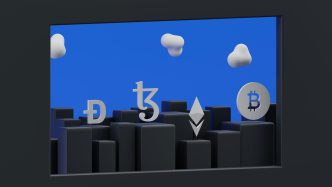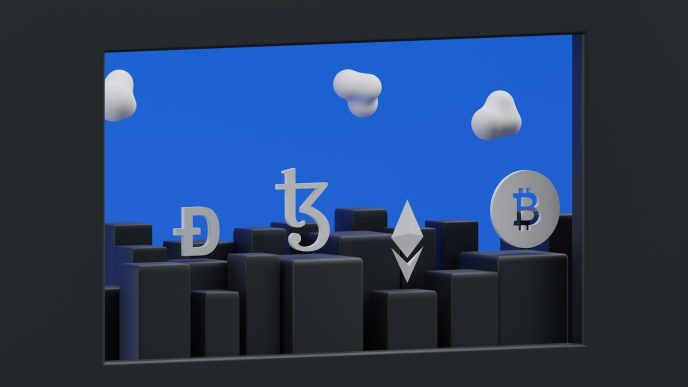Ethereum, the world’s leading platform for decentralized applications (dApps), has long been plagued by issues of scalability and high transaction costs. As the network’s popularity surged, so did the congestion, leading to slower transaction times and exorbitant gas fees. To address these challenges, Ethereum Layer 2 solutions have emerged as a vital innovation, offering a pathway to enhanced scalability and efficiency. This article delves into the intricacies of Ethereum Layer 2 solutions, their significance, and the impact they are having on the blockchain ecosystem.
Layer 2 solutions are essentially protocols built on top of the Ethereum blockchain (Layer 1) designed to improve its scalability. They achieve this by processing transactions off the main Ethereum chain, thereby reducing the load on the network and enabling faster and cheaper transactions. This approach is akin to creating express lanes on a congested highway, allowing certain types of traffic (transactions) to move quickly and efficiently.
One of the most popular types of Layer 2 solutions is rollups, which bundle multiple transactions into a single transaction that is then recorded on the Ethereum mainnet. This not only increases the number of transactions processed but also significantly reduces the cost per transaction. R
ollups come in two main types: Optimistic Rollups and Zero-Knowledge (zk) Rollups. Optimistic Rollups assume transactions are valid by default and only perform computations in the event of a dispute, while zk-Rollups use cryptographic proofs to verify transactions, offering enhanced security and privacy.
Among the leading Layer 2 projects are Arbitrum, Optimism, and Polygon zkEVM. Arbitrum, for instance, utilizes Optimistic Rollups to achieve high throughput and low fees, making it a popular choice for developers and users alike.
It offers a developer-friendly environment with familiar tools and streamlined deployment processes, hosting a growing range of DeFi protocols, NFT marketplaces, and gaming platforms. Similarly, Optimism leverages Optimistic Rollups to provide near-instant transaction finality and lower gas fees, while ensuring Ethereum-level security.
Polygon zkEVM, on the other hand, employs zk-Rollups to offer better security compared to optimistic rollups, along with high transaction throughput and shorter withdrawal times. Its full EVM compatibility allows existing Ethereum applications to run seamlessly, making it easy for developers to integrate their projects on the zkEVM platform.
The advantages of Layer 2 solutions extend beyond just scalability and cost reduction. They also enable Ethereum to support innovative applications and maintain its position as a leader in the blockchain space.
By offloading transactions from the mainnet, Layer 2 solutions could cause a shift in Ethereum’s economic dynamics, potentially affecting the incentives for validators on the network. However, they also present an opportunity for more efficient price discovery and a better user experience on the Ethereum network.
Despite their benefits, Layer 2 solutions are not without their challenges. One of the most significant concerns is the potential for validators on the Layer 2 blockchain to commit fraud. This risk is inherent due to the reliance on a separate set of validators to process transactions.
Additionally, while Layer 2 solutions successfully manage to increase transaction speed and reduce costs, they do so at the expense of some degree of decentralization. For instance, sidechains, while offering the same user experience as the Ethereum mainnet, have a lower level of decentralization due to their separate consensus mechanism.
Another challenge is associated with the withdrawal process from Layer 2 solutions. For example, plasma chains, despite their ability to facilitate high-speed transactions with lower gas fees, require several days for withdrawals to allow for arbitration claims. This can involve an additional capital cost in cases where liquidity is sought for fungible assets.
The development and implementation of Layer 2 solutions also require significant computational power. For instance, validiums, while not vulnerable to cyber-attacks and offering near-zero withdrawal delays, require high computational power, making them less cost-effective for use cases with low throughput.
Looking ahead, the integration of Ethereum 2.0 is expected to further enhance the capabilities of Layer 2 solutions. Ethereum 2.0, a transformative upgrade to the Ethereum blockchain, aims to boost speed, efficiency, and scalability.
Its primary objectives include the implementation of Danksharding, which is expected to elevate Ethereum’s throughput to an impressive 100,000 transactions per second (TPS). This advancement holds immense implications for Layer 2 networks, driving their scalability and efficiency.
In conclusion, Ethereum Layer 2 solutions are playing a crucial role in addressing the critical challenges of scalability and efficiency, setting the foundation for Ethereum’s future growth. As the blockchain landscape continues to expand, Ethereum’s embrace of Layer 2 technologies ensures its ability to adapt and thrive, catering to the ever-increasing demands of its diverse user base. By offering faster, cheaper, and more efficient transactions, Layer 2 solutions are not just a temporary fix but a necessary evolution for Ethereum to maintain its dominance in the blockchain ecosystem.












